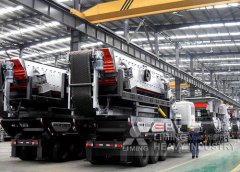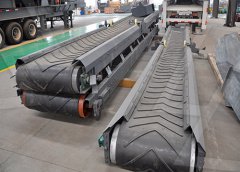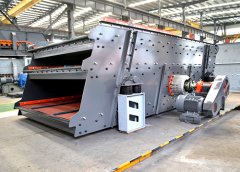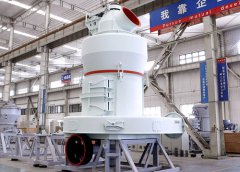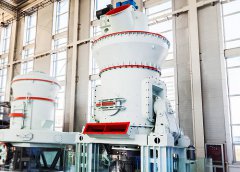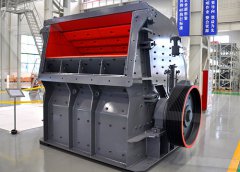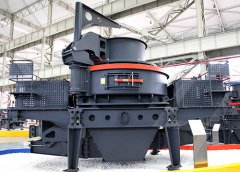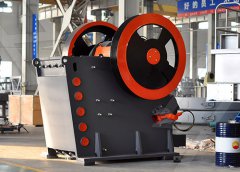
Full article: Lessons from Germany’s hard coal mining
German hard coal production ended in 2018, following the termination of subsidies. This paper looks at 60 years of continuous decline of an industry that employed more than 600,000 people, through a case study comparing Germany’s two largest hard coal Consumption of hard coal in Germany was significantly higher in 2021 compared to 2020 and increased by more than one fourth to around 37.9 million tonnes SKE (SKE: hard Hard coal and lignite Rohstofftransparenz.de
احصل على السعر
The end of an era: hard coal in Germany DW 04/26/2018
200 years of coal mining have certainly left their mark on Europe. As Germany prepares for the closure of its last two hard coal mines, an exhibition in Essen Germany’s hard coal mines produced 41.3Mt in 1998, 39.2Mt in 1999, 33.3Mt in 2000 and 27.1Mt in 2001. By 2006, their combined output had fallen to 20.7Mt. Production costs Hard Coal Mining, Germany Mining Frontier
احصل على السعر
Analysis of the historical structural change in the German hard coal
competitiveness of German hard coal mining over the investigation period from the late 1950s to 2015. The case study describes the historical structural change process and German hard coal production ended in 2018, following the termination of subsidies. This paper looks at 60 years of continuous decline of an industry that employed more than 600,000 people,...Lessons from Germany’s hard coal mining phase-out:
احصل على السعر
German hard coal importers want extended run times for reserve
1 天前Germany's hard coal importers want the Berlin government to prolong the operation of hard coal-to-power generation plants enlisted in last year's energy crisis German hard coal production ended in 2018, following the termination of subsidies. This paper looks at 60 years of continuous decline of an industry that employed more than 600,000 people,...History of hard coal production in Germany and
احصل على السعر
Coal in Germany Mining Technology
Over the five years to 2021, production from Germany decreased by a CAGR of 11.1% and is expected to drop by a CAGR of 1.88% between 2022 and 2026. The transition of the Ruhr region in Germany from a hard coal belt into a knowledge-based economy with a dynamic service sector and state of the art universities over the past 60–80 years has been widely touted as a successful example of how just and fair low carbon energy transitions can unfold. This paper leverages documentary analysis How to avoid unjust energy transitions: insights from the Ruhr
احصل على السعر
Growing up in Germany's Ruhr Valley DW
After more than 150 years, Germany's last hard coal mine was shut down in December 2018. Coal mining put its stamp on the Ruhr Valley. DW's Bettina Stehkämper looks back at her childhood as a1.1 History of German Mining Subsidence Engineering 1.1.1 Introduction. To clarify why mining subsidence engineering emerged in the German mining industry, especially in underground hard coal mining, and which conditions made for the development of certain subsidence prediction methods, it is helpful to look back to the Prediction of Mining-Induced Surface Subsidence and Uplifts in Germany
احصل على السعر
Anthracite
Anthracite, also known as hard coal and black coal, is a hard, compact variety of coal that has a submetallic lustre.It has the highest carbon content, the fewest impurities, and the highest energy density of all types of coal and is the highest ranking of coals.. Anthracite is the most metamorphosed type of coal (but still represents low-grade metamorphism), in For the German hard coal mining phase-out, the majority of costs were linked to structural and social policies. designed to slow down the economically driven phase-out, as depicted in Figure 3.Lessons from Germany’s hard coal mining phase-out: policies
احصل على السعر
Closure of German Hard Coal Mines: Effects and Legal Aspects of
Following the closure of the last hard coal mines in Germany, pumping is no longer necessary. However, the resulting rise of mine water can affect the environment. Laws have been enacted at the European and national level to protect properties. Within the framework of the approval procedure, it must be determined whether the cessation of In German hard coal mining, currently about 21 million tons of hard coal are mined annually by RAG in 8 different mines with about 30,000 miners underground. Mining is performed exclusively in the long wall caving technique employing shearer loaders or coal planes (RAG Aktiengesellschaft 2007; Prinz et al. 1998).Exposure assessment for nitrogen oxides and carbon monoxide in German
احصل على السعر
Post-Mining—a Holistic Approach Mining, Metallurgy
In Germany, hard coal mining lasted around 200 years. However, pumping of mine water and subsidence-related groundwater issues due to underground workings will remain a permanent task constantly. During the post-mining period, it is useful to revisit the post-mining goals and outcomes on a periodic basis.The characteristics of coal in Germany are similar to the UK: In both countries hard coal mining has been uneconomic for decades, coal infrastructure is mostly old and hard coal import dependence is rising (Oei et al., 2019). The consequences for the coal regime, however, have been very different due to a different political direction.Comparing coal phase-out pathways: The United Kingdom’s and Germany
احصل على السعر
Germany is still razing villages for coal mines despite pledges to
Germany has pledged to stop burning coal by 2038, at least eight years behind 16 other European countries that have committed to ending coal use by the end of this decade or earlier. There is someWest German coal mining also helped stabilize the grid as East German nuclear power plants shut down after reunification. More than 600,000 people worked in the German hard coal industry in the 1960s.Germany’s largest hard coal mine: ‘This is our final mission’
احصل على السعر
Lessons from six decades of hard coal production phase-out in Germany
Taking the Paris Agreement seriously, implies a coal phase-out for all industrialized countries by 2030. In our paper in Climate Policy we derive lessons for these upcoming coal phase-outs from examining the phase-out of hard coal production in the two largest mining regions of Germany, the Ruhr area and the Saarland. The analysis starts The coal production started in 1962 (it is true, it was in 19 62) and finished in 1976. The colliery had a diagonal shaft from the surface to a depth of 135 metres. The picture shows how a colliery looked in the early years of The history of mining in the Ruhr area (Germany)
احصل على السعر
Perceptions on mine water and mine flooding ScienceDirect
Because at the end of 2018, all German hard coal mines were closed for economic and ecological reasons, and therefore, RAG AG can no longer derive economic benefit from coal mining. After the underground mines have been cleared of potentially toxic substances, the mine water can rebound to a pre-defined level ( Kretschmann et al., Hard coal mining in Germany, centred on the Ruhr, Saar and Ibbenbüren coalfields, was amalgamated into Deutsche Steinkohle AG (DSK) at the beginning of 1999. Germany’s hard coal mines produced 41.3Mt in 1998, 39.2Mt in 1999, 33.3Mt in 2000 and 27.1Mt in 2001. By 2006,Deutsche Steinkohle (DSK) Coal Mine Mining Technology
احصل على السعر
Commission watch Managing Germany’s coal phase-out
Coal mining state premier says Germany will exit coal in 2030s. Germany’s coal commission will agree on a phase-out within around 20 years, according to Armin Laschet, premier of the western coal mining state of North Rhine-Westphalia (NRW). “The coal exit will take place in the 2030s,” Laschet told business leaders.The majority of German hard coal production came from the Ruhr area, which is located between Dortmund and Düsseldorf. Therefore, this study focuses on the development in the Ruhr area. The coal mining and steel industry (in German ‘Montanindustrie’) made this area the most densely populated area in Germany—until The Transformation of the German Coal Sector from 1950 to
احصل على السعر
Germany’s effort to phase out and rationalise its fossil-fuel
Its hard-coal mining industry — the remaining open mines are all located in the Land of North Rhine-Westphalia — has been uncompetitive for decades, due to its high extraction costs, and has had to rely on government assistance. Germany will soon have to import all of its hard coal as its domestic production will cease by the end of 2018.There are only two hard coal mining countries left in the EU, i.e. Poland (96% of EU output) and the Czech Republic, and the last to cease mining were Germany, France and Spain. Poland mines about 55 million tons of this resource annually, while the Czech Republic mines about 2 million tons (Fig. 3 a).Challenges of the polish coal mining industry on its way to
احصل على السعر
The History of the Coal Mining Industry and Mining Accidents in
According to ILO’s occupational accident rates between 2003 and 2008, Turkey is in the third place in deadly occupational accidents after India and Russia. The occupational accident rate is approximately 1% in England, 2.5% in Germany, 3.5% in France, and 4% in Spain, whereas the rate is 9.5–10% in Turkey.
احصل على السعر
